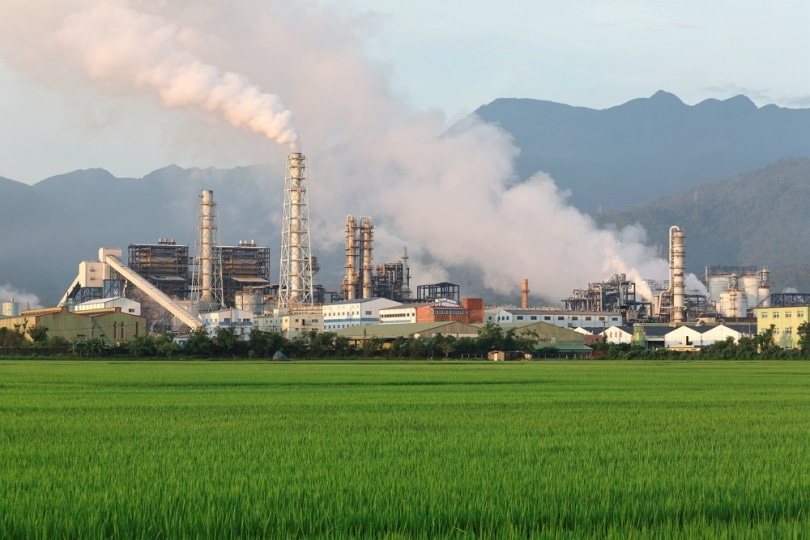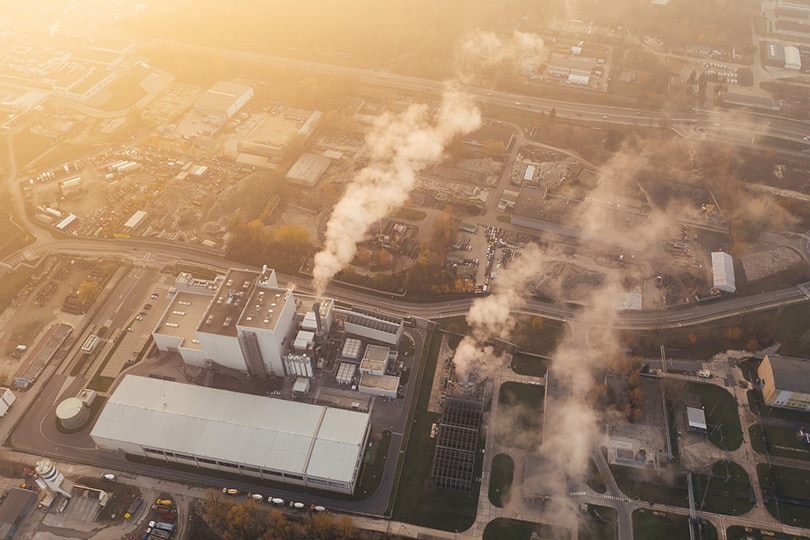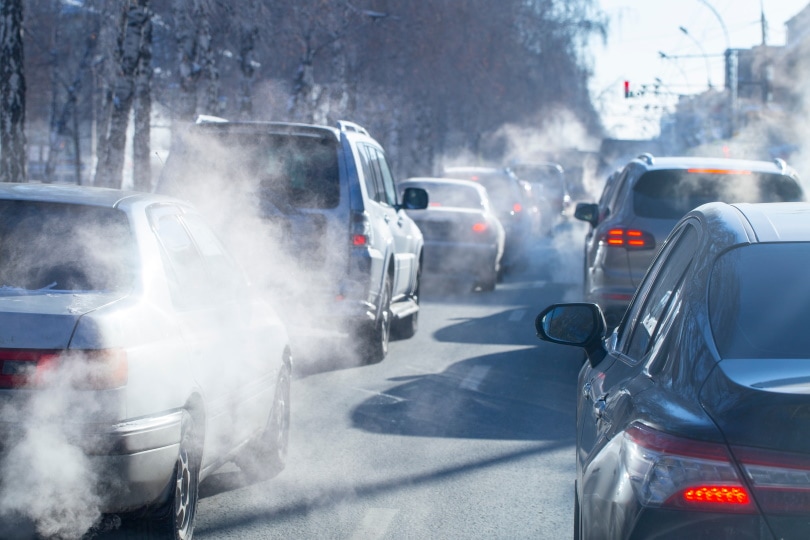What are Greenhouse Gas Emissions? Pros, Cons, Types & FAQs
-

- Last updated:

Greenhouse gas is a general term used to describe gases that reside in the earth’s atmosphere and trap the heat emitted from the sun. Greenhouse gases are a crucial part of how our planet works; without them, our planet would be an inhospitable place, too cold for any living thing to survive, especially humans. These gases are the main reason why our planet is suitable for human life, creating an average, comfortable temperature of around 59°F.
Because of the way our civilization manipulates fossil fuels to create energy, the greenhouse effects are growing faster than ever and escalating into an irreversible state. The gas emissions from burning fossil fuels are collected in the earth’s atmosphere, and average temperatures rise.
How Does Greenhouse Gas Emission Work?
Greenhouse gas is easiest to explain by imagining a giant dome covering our entire planet; the sunlight can reach inside the hypothetical dome and create heat, but it cannot escape it. It’s the same with the atmosphere; the sun’s heat is collected inside and cannot exit the atmosphere, which keeps our planet warm.
With the sudden rise in energy consumption, humans needed to find ways to create new energy, mainly by burning fossil fuels and deforestation. These actions are causing the greenhouse effect to negatively affect our planet, as more gas is getting trapped in the atmosphere, leading to global warming.

What are the Different Types of Greenhouse Gas?
Greenhouse gases are a crucial part of the earth’s atmosphere, and we should learn what these gasses are and where they come from before ending up trapped in the atmosphere. These gases can occur both in their natural form and coming from human activities. While gases that occur naturally are beneficial to nature’s balance, artificial sources have drastic negative effects on the environment.
Water vapor (H2O)
As temperatures on the planet rise, the water accumulated in lakes, rivers, oceans, and soil evaporates more over time. When temperatures get warmer, more humidity is found in the air, which causes the water vapor in the atmosphere to rise. Even though water vapor is the most abundant gas in the atmosphere, it is thought to be the effect of the atmosphere’s natural warming and not industrialization.

Ozone (O3)
Ozone is a type of greenhouse gas that can be both harmful and beneficial, depending on its location in the atmosphere. Ozone naturally occurs at higher levels in the atmosphere, known as the stratosphere, where it is valuable to the safety of living beings on the planet. When Ozone is found in the lower surface levels of the atmosphere, it comes from air pollution and can harm the planet. Even though surface-level Ozone can increase the greenhouse effect, its protective features outweigh the harmful ones.
Carbon dioxide (CO2)
Carbon dioxide is thought to be one of the most important greenhouse gases. It is another gas that can occur both naturally and artificially. Its natural sources are humans, plants, and animals, and it’s a crucial part of the planet’s well-being. However, since the industrial revolution began, carbon dioxide levels have increased by more than one-third with the burning of fossil fuels like natural gas, coal, and gasoline. Carbon dioxide has a very long life, which means everything we emit today will be potentially trapped in the atmosphere for more than a century.

Nitrous oxide (N20)
Nitrous oxide is a greenhouse gas that derives primarily from human activity. While Nitrous oxide can be a product of many natural sources, about 40% of global nitrous oxide emissions derive from humans. Agricultural management, industry activities, and transportation are the three leading causes of emissions of this gas into the atmosphere. This greenhouse gas has a long life of almost 120 years, and it is so heavy that a pound of nitrous oxide has warming effects equivalent to 300 pounds of carbon dioxide.
Fluorinated gasses
Fluorinated or industrial gases are Hydrofluorocarbons (HFCs), Perfluorocarbons (PFCs), Sulfur hexafluoride (SF6), and Nitrogen trifluoride (NF3). While these gases are emitted in much smaller quantities than other greenhouse gases, they have a life span ranging from 270 years for HFCs and up to 50,000 years for PFCs, which means they will be scattered all around the globe and remain trapped in the atmosphere for a long time.

Advantages of Greenhouse Gas Emissions
Thanks to the emission of greenhouse gases, our planet is warm enough to sustain all life. Besides regulating the temperature on the Earth, greenhouse gases also protect living beings from dangerous solar radiation. Ozone acts as a shield, protecting the planet from UV rays. These gases bounce harmful energy back into space. Thanks to the livable temperatures achieved by greenhouse gases, there is still ice in the planet’s polar regions.
Disadvantages of Greenhouse Gas Emissions
Even though there are crucial benefits to greenhouse gas emissions, the damages they cause are much more significant. Since the industrial revolution, water levels are rising, carbon dioxide levels are increasing drastically, and global warming is causing massive climate change. Overall, the impact greenhouse gases have on the environment is tremendous, and they keep getting worse. Humans are constantly destroying forests and creating more CO2 emissions, leading civilization on a path of no return.
Frequently Asked Questions (FAQs)
Which greenhouse gas has the most impact on global warming?
Carbon dioxide is responsible for most of the country’s emissions, with the primary source of greenhouse gas emissions in the United States being transportation and electricity. Since CO2 is accountable for most global pollution, it significantly contributes to global warming.

Who emits the most CO2?
When it comes to CO2 emissions, Asia is by far the largest producer globally, producing 10 billion tons of CO2 each year, while China accounts for 53% of the global pollution. North America is the second largest, carrying 18% of global emissions, and Europe is third with 17%.
What are the main effects of global warming?
Global warming and climate changes are causing extreme changes in weather, leading to floods, wildfires, hurricanes, rainstorms, droughts, and much more. Global warming is also causing wildlife extinction rates to skyrocket, and many animal species such as mammals, birds, reptiles, and fish are disappearing 114 times faster than predicted. All these events are caused by pollution, climate change, and deforestation.
Final Thoughts
This article covered the basics of greenhouse gases; what they are, where they come from, and their beneficial and harmful features. Our civilization is slowly leading the planet to an irreversible state and if we continue going down this path, we will deplete nature’s energy sources. We will contribute more to the accumulation of greenhouse gases, which will keep raising the earth’s temperature.
If humans were to change their living habits, if deforestation would stop, and the emissions of CO2 would lower, we would have a chance of maintaining a healthy planet.
- Greenhouse Effect 101 | NRDC
- Global Warming – NASA
- The Principal Greenhouse Gases and Their Sources | NEEF
- Greenhouse gases – US Energy Information Administration (EIA)
- Advantages or Disadvantages of the Greenhouse Effect | by Maria Mith | Medium
- Who emits the most CO2 today? – Our World in Data
- Are the Effects of Global Warming Really that Bad?
Featured Image Credit: CHEN MIN CHUN, Shutterstock
Contents


